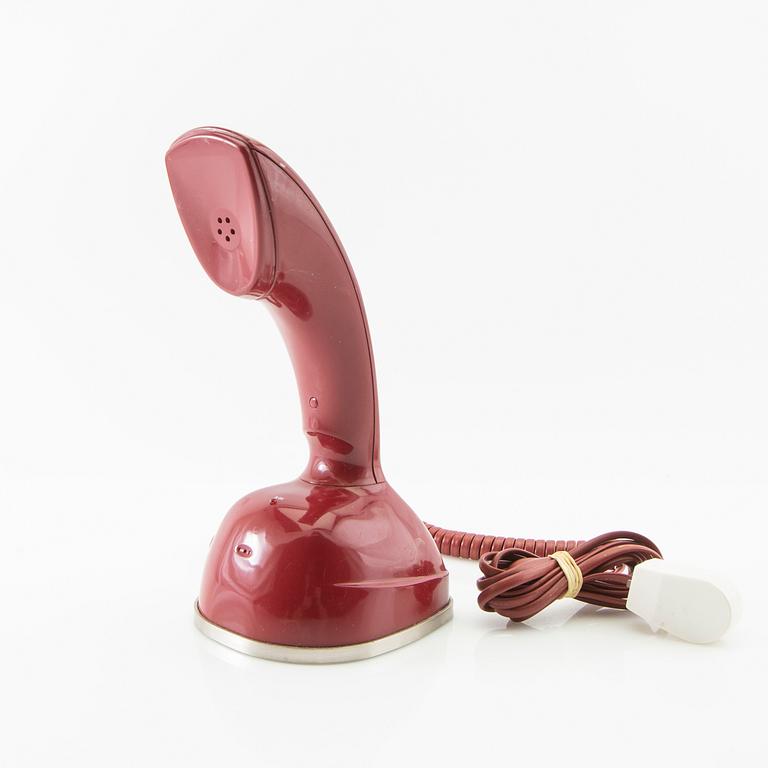Hugo Blomberg, Ralph Lysell & Gösta Thames "Ericofon" or "Cobra phone", LM Ericsson, Sweden, 1950s.
Burgundy thermoplastic with a metal rim, push buttons, height approximately 21 cm, made for export to, among others, Denmark.
Not thoroughly examined. movement not tested.
More information
It is no coincidence that the Ericofon, or Cobra phone as it is also called, is the face of both foreign and Swedish books and media about the history of the telephone. Creating a one-piece telephone had long been a dream for all the world's telephone manufacturers. The first attempt was made by Siemens & Halske in Germany as early as 1930, but the project did not progress beyond a short test series of a far from complete phone. Instead, it was Ericsson that was first to market with the groundbreaking “all-in-one” telephone. After its launch in 1956, the Ericofon achieved immediate success with customers, and within just over half a year, orders exceeded production capacity by 500 percent.
The Cobra phone became a hot design object, and as early as the 1970s, the Museum of Modern Art (MoMA) in New York presented the 300 best-designed industrial products of the entire 20th century, among which the Cobra phone was praised as one of them, and today it is part of their collections.
The Ericofon marks a paradigm shift in telephone design. Its both obvious and spectacular design represented a complete break from the earlier heavy, black Bakelite devices. It is also the first Swedish telephone to have its own name, rather than just a number and letter ID, the first sign that the telephone was seen more as a consumer product than merely an extension of telephony as a system.












































